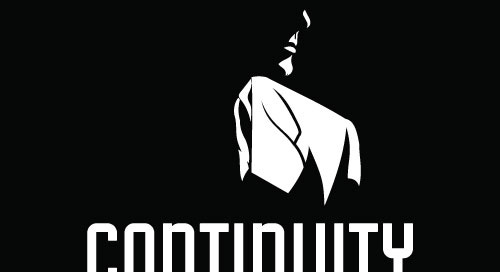You’re in a movie.
You’re driving down Hollywood Boulevard in 1948. Everything is silver and shadow; everything is concrete and ink. You’re following a beat-up rickshaw. It’s plastered with stickers. It’s got a cracked turn signal and a rusty license plate.
People spill into the street through gaps between great hulking Packards and Fords parked at the curb. They’re a riot of styles: Women in wide-collared pants suits with bug-eye shades; men in checkered sport coats over wide bottom slacks. An undulating ocean of fedoras.
Behind it all rise the classic facades of film noir, gray as tombstones: The Bradley, the New York Public Library, The Drake Hotel from Chicago, the Los Angeles Police Department, the San Francisco Funicular. Squeezed between those iconic structures: record shops, coffee shops, diners, barbers, shoe stores. Neon signs, globe lights, striped awnings, a giant neon vertical “Chicago” marquee blinking dimly in the darkening shadows of the setting sun.
The rickshaw stops.
Push through the glass, past a passenger in a pale suit, past the rickshaw runner in his dirty white shirt and pants, his dirty captain’s cap, his sweat-stained neckerchief, to the street and the reason he’s stopped. A crowd has piled off the sidewalks into traffic, an excited gang of paparazzi and tourists with their cameras pointed at Marilyn Monroe with her white dress floating up around her hips as she stands over a ventilation grate. The rickshaw driver jerks his carriage around the crowd.
His passenger: middle-aged, Chinese, brown camel hair coat over a tan shirt and a brown tie, legs crossed, writing carefully, laboriously in a notebook balanced on his knee. A small hardback reporter’s journal flipped open. Dead center of the page, a grid of Chinese block characters. The passenger carefully tears the page out. The man folds the page, slips it into his coat pocket. He snaps the notebook closed. Glimpse of a heavy badge is clipped to the cover.
The rickshaw stops again. The driver is sweating to beat hell. His uniform is the impossibly heavy white denim worn by Charlie Allnut, captain in The African Queen, the same uniform worn by every rickshaw driver on set. He looks up, trying to catch his breath, using his neckerchief to wipe his glistening face as a gaggle of Extras pile up around their gesticulating guide who is walking them through orientation.
“You’re in a movie,” They murmur and whisper. The guide drops into his script: “This place,” throwing his arms wide to take everything in. “was built by the Brothers Hang as a virtual set for a film noir game abandoned in development. It was carved out of historic three-flats and brownstones from Chicago’s Brickyard neighborhood. They spent billions turning their purchase into a perfect period replica of an American metropolitan city as it would have existed between 1939 to 1958—the classic Film Noir period. When investors pulled out, the Brothers Hang just walked away. The place filled up with squatters and noir punks, then cosplayers started running scenes, shooting frame for frame remakes of classic noir. The Brothers Hang realized they’d accidentally built a theme park for film freaks and retooled the whole joint into what you’re seeing now. Welcome,” he looks around majestically. From somewhere, music swells. “. . . to Circa.”
“Hey look, it’s a Humphrey Bogart!”
Keep reading with a 7-day free trial
Subscribe to The Full Bull to keep reading this post and get 7 days of free access to the full post archives.





